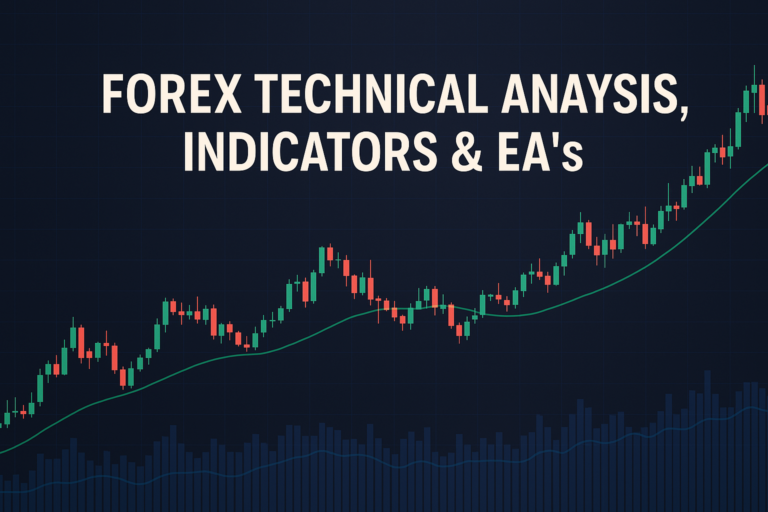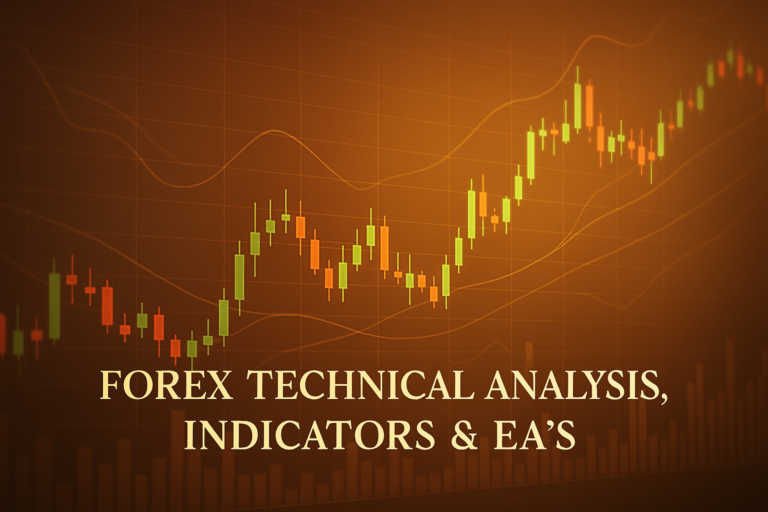
Price Scale Jumping can disrupt Forex trading, but understanding and addressing it can lead to better trading outcomes.
Forex trading can feel like a thrilling game of chance, but it comes with its challenges. One of the most frustrating issues traders face is known as Price Scale Jumping. Imagine waking up to check your trades, only to find that the prices have changed dramatically overnight! This can leave both beginners and professional traders feeling confused and anxious. Understanding this issue is crucial for anyone involved in Forex trading, as it can lead to significant losses if not addressed properly.
The struggle with Price Scale Jumping is common. Many traders find themselves at a loss, not knowing how to react when the prices jump unexpectedly. This problem can turn a promising trade into a nightmare. It’s essential for traders to grasp the nature of this issue and learn how to navigate it effectively.
One critical aspect of Forex trading is the stop loss trigger. This tool helps protect traders from excessive losses by automatically closing a position at a predetermined price. Understanding how to use this effectively can be a game-changer in dealing with Price Scale Jumping.
Understanding the Problem
Price Scale Jumping occurs when there are sudden, unexpected changes in the price of a currency pair. This can happen due to various factors, such as market volatility, economic news releases, or sudden shifts in trader sentiment. For example, if there’s a political crisis in a country, traders may panic, causing the price to jump dramatically within minutes. This creates a challenging environment for traders who rely on stable price movements.
One common scenario is when a trader sets a buy order for a currency pair, only to find that the price has skyrocketed before they can execute the trade. This can lead to frustration and missed opportunities. Traders must understand that Price Scale Jumping is not just a technical issue but also a market-related problem. It’s essential to stay informed and aware of market conditions to anticipate these jumps.
Solutions for Price Scale Jumping
Addressing Price Scale Jumping requires a blend of awareness and practical strategies. Here are some effective solutions:
- 1. Use Limit Orders: Instead of market orders, consider using limit orders. This way, you set a specific price at which you want to buy or sell, reducing the chance of Price Scale Jumping affecting your trade.
- 2. Monitor Economic News: Keep an eye on economic calendars and news releases. Major announcements can lead to volatility, so be prepared for potential price movements.
- 3. Adjust Your Stop Loss: Make sure your stop loss is set at a level that accommodates potential price swings. This can prevent unexpected closures of your trades.
- 4. Use Technical Analysis: Learn to read charts and identify trends. Understanding market behavior can help you anticipate price movements and react accordingly.
- 5. Stay Informed: Join Forex forums or follow expert traders to stay updated on market conditions and potential price jumps.
If you want to know more about future market predictions, check out the GBPUSD forecast April 28, 2025. It can provide insights into potential price movements!
Frequently Asked Questions
1. How do I detect this issue in real-time?
Detecting Price Scale Jumping in real-time requires constant monitoring of the market. Traders can use live charts and trading platforms that offer real-time updates. Additionally, setting alerts for price movements can help you stay informed. For instance, if you’re trading EUR/USD, set an alert for significant changes in price. This way, you can react quickly to avoid losses.
2. Can brokers legally do this?
Yes, brokers can adjust prices based on market conditions. However, they must do so transparently. If you suspect your broker is manipulating prices, it’s essential to review their policies and ensure they are reputable.
3. What tools can I use to prevent this?
Several tools can help mitigate Price Scale Jumping. Using limit orders, stop losses, and trading platforms with advanced charting tools can provide better control over your trades. Additionally, using trading bots can help automate trades based on your set parameters.
4. Is this problem more common in specific market conditions?
Yes, Price Scale Jumping tends to occur during high volatility periods, such as around major economic announcements or geopolitical events. Traders should be particularly cautious during these times and adjust their strategies accordingly.
5. How can I recover from a loss caused by Price Scale Jumping?
Recovering from a loss requires a strategic approach. First, analyze what went wrong and learn from it. Then, reassess your trading plan and set stricter risk management rules. Gradually rebuild your account by taking smaller, calculated trades until you regain confidence.
Conclusion
Understanding Price Scale Jumping is vital for every Forex trader. By recognizing the signs and implementing effective strategies, you can manage this issue better. Stay informed, use the right tools, and keep refining your trading strategies to minimize risks associated with Price Scale Jumping.
Remember, every trader faces challenges. Embrace learning and growth, and don’t hesitate to share your experiences with others!
Recommended Next Steps
After learning about Price Scale Jumping, here are some next steps to enhance your trading experience:
- Research more about market volatility and its effects.
- Join online trading communities to share experiences and strategies.
- Practice trading on a demo account to test your strategies without risking real money.
- Stay updated with economic news to anticipate Price Scale Jumping events.
- Consider taking a course on Forex trading to deepen your understanding.
Price Scale Jumping is a significant challenge in Forex trading, but with knowledge and preparation, you can navigate it successfully.
To explore the topic from another angle, refer to this informative source Forex.com, FX Empire
Expand Your Knowledge
- 📌 Forex Trading Learning Road Map
- 📌 Forex Trading Course with no Fees
- 📌 Forex Trading Issues, Problems, and Solutions
- 📌 Forex Daily Forecast & Live Updates
- 📌 Forex Fundamental & News Analysis: Tomorrow’s Market Movers & Trade Opportunities
- 📌 Forex Education Hub: Learn & Profit
- 📌 Forex Technical Analysis, Indicators & EA’s
Start Trading Today
Ready to take your forex trading to the next level? Open an account with Exness, one of the most trusted platforms in the industry. 👉 Sign Up Now and trade with confidence!
My recommended broker stands out with ultra-low spreads for beginners, instant withdrawals, and zero spread accounts for pro traders.
Trusted since 2008, lightning-fast execution, no hidden fees, and a secure, transparent trading environment—giving you the edge you need to succeed. 🚀
Watch this helpful video to better understand Price Scale Jumping:
In this video, Nick discusses a recent trade opportunity on the Euro Sterling Dollar (EUR/GBP) pair, highlighting the technical analysis behind his decision-making process. He begins by explaining the overall downtrend observed on lower timeframes, despite the fact that the weekly chart indicates a retracement. Nick notes the importance of support levels from previous price action, specifically referencing a significant support area established last year. He emphasizes the relevance of the 633 moving average (MA) in conjunction with the support levels, suggesting that a bounce from this MA could present a buying opportunity. However, the price continued to move lower initially, leading Nick to adjust his strategy.
As the price approached a major support zone, Nick switched to lower timeframes to identify aggressive bounce trade setups. He observed the formation of higher lows, indicating a potential reversal, and entered a buy position. Despite the aggressive nature of his trading style, he explains the importance of risk management, as he only risked 1% of his account on this trade. Nick outlines the process of scaling into his position while maintaining stop losses below the support area. He sets profit targets based on previous highs, aiming to capitalize on potential upward movement. Nick concludes by advising viewers to wait for confirmation of bullish momentum before entering trades, particularly on higher timeframes, ensuring that they are trading within a structured plan.
For those interested in the future of the Euro to US Dollar exchange rate, it’s worth checking out the EURUSD forecast April 29, 2025. This analysis will provide insights into potential market movements and help traders make informed decisions based on current trends and economic indicators.
YouTube Video Library: Related Videos
TRENDline trading #trading #scalping #tradingstrategy #tradinganalysis #banknifty #nifty #nifty50
This indicator will help you predict market moves in Tradingview #shorts #forex #forextrading
More people trade retail strategies than SMC
How To Predict Reversals
Jump 25 index trading #jump25 #vix75 #forex #volatility75
A small green candle suggesting a possible short-term bounce. #trading #forex #trading #devtrading
Best Pullback Trading Strategies In Forex – The Pullback Mastery Guide
Note: The video above is embedded from YouTube and is the property of its original creator. We do not own or take responsibility for the content or opinions expressed in the video.





